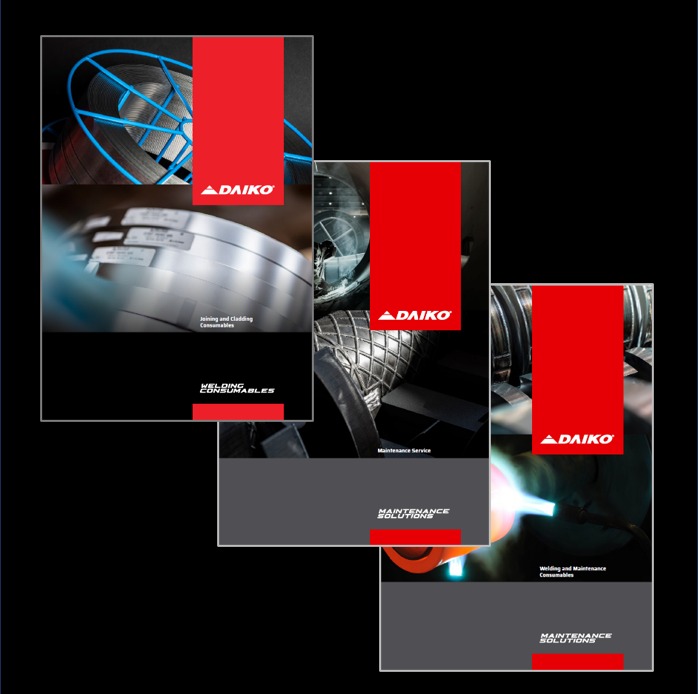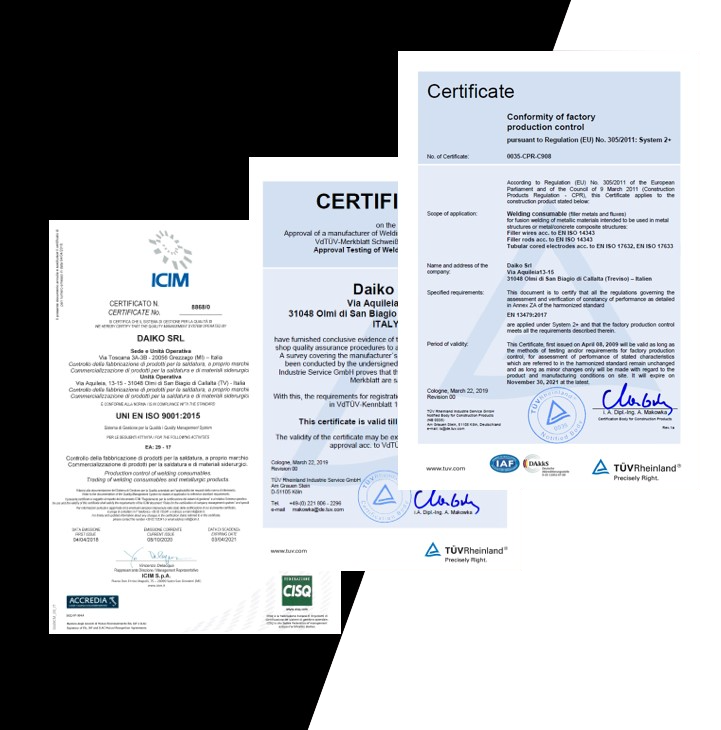- Home
- >
- All DAIKO products
- >
- CREEP RESISTING STEELS
- >
- 5CrMo
5CrMo
Application
Designed for elevated temperature service up to 600°C, this weld metal demonstrates exceptional corrosion resistance in challenging environments such as superheated steam, hot hydrogen gas, and high-Sulphur crude oils. Its primary applications span across critical components in oil refineries, notably serving in boiler superheaters, heat exchangers, piping, and pressure vessels. Beyond its conventional uses, this weld metal has proven successful in unique applications, including subsequent nitriding. For instance, it has been effectively employed in the repair of 3Cr-1Mo-V and 2Cr-Mo-1A1 steels, commonly used for molds in the injection molding of plastics. This versatility highlights its capability to address specialized requirements, showcasing its adaptability across diverse industrial scenarios.
Alloy Type
5%Cr-½%Mo steel for elevated temperature
service up to 600°C.
Microstructure
In the PWHT condition the microstructure consists
of tempered bainite.
Materials
EN W.Nr.: 12CrMo 19 5 (1.7362), X7CrMo 6 1 (1.7373), X11CrMo 6 1 (1.7374), GS-12CrMo 19 5 (1.7363).
ASTM: A387 gr. 5, A335 gr. P5, P5b, A234 gr. WP5 (fittings), A199 gr. T5, A213 gr. T5, T5b, A182 gr. F5, F5a, A336 gr. F5, A217 gr. C5.
Welding & PWHT
Due to the inherent hardness observed in the as-deposited state, reaching values of up to 400HV, coupled with the relatively diminished fracture resistance characteristic of the 5CrMo bainitic microstructure, it is recommended to employ a preheat and maintain a minimum interpass temperature of 200°C. This measure is essential to prevent the occurrence of hydrogen-induced cold cracking. Ensuring electrodes are meticulously controlled and handled is crucial to achieve weld metal with hydrogen levels below 5ml/100g. In instances involving TIG root runs or all-TIG welds, consideration may be given to a lower preheat of 150°C. However, it should be acknowledged that opting for faster cooling rates in such scenarios may result in deposits that are partially martensitic and harder in nature. The complete transformation of the 5CrMo during welding occurs within a working range of 200-350°C. Consequently, direct transfer (at temperatures exceeding 150°C) to Post-Weld Heat Treatment (PWHT) is permissible, followed by Non-Destructive Examination (NDE). If PWHT is intended after complete cool-out and NDE, it is advisable to maintain the preheat temperature for a specified duration post-welding, in accordance with thickness, to facilitate effective hydrogen dispersal. Notably, this precaution holds less significance for TIG and solid wire MAG processes. PWHT to temper the weldment typically falls within the range of 705-760°C, aligning with ASME B31.3 standards. The minimum recommended holding time for this process is two hours. For castings, the suggested minimum PWHT temperature is lower, with specified temperatures as low as 670°C.
Products of the line 5CrMo
| Product name | Process | AWS specifications | EN ISO specifications | |
| DAIKOFCW 5CrMo | FCAW |
AWS A5.29
E81T1-B6C/M |
EN ISO 17634-B
T55T1-1C/M – 5CM |
|
| DAIKOWT 5CrMo | GTAW |
AWS A5.28
ER80S-B6 |
EN ISO 21952-A
W CrMo 5 Si |
|
| G-TECH 5CrMo | SMAW |
AWS A5.5
E8015-B6/E8016-B6 |
EN ISO 3580-A
E Cr Mo 5 B 42 |
|
| DAIKOWM 5CrMo | GMAW |
AWS A5.28
ER80S-B6 |
EN ISO 21952-A
G CrMo 5 Si |
|
| DAIKOWS 5CrMo | SAW |
AWS A5.23
EB6 |
EN ISO 24598-A
S CrMo5 FB |


